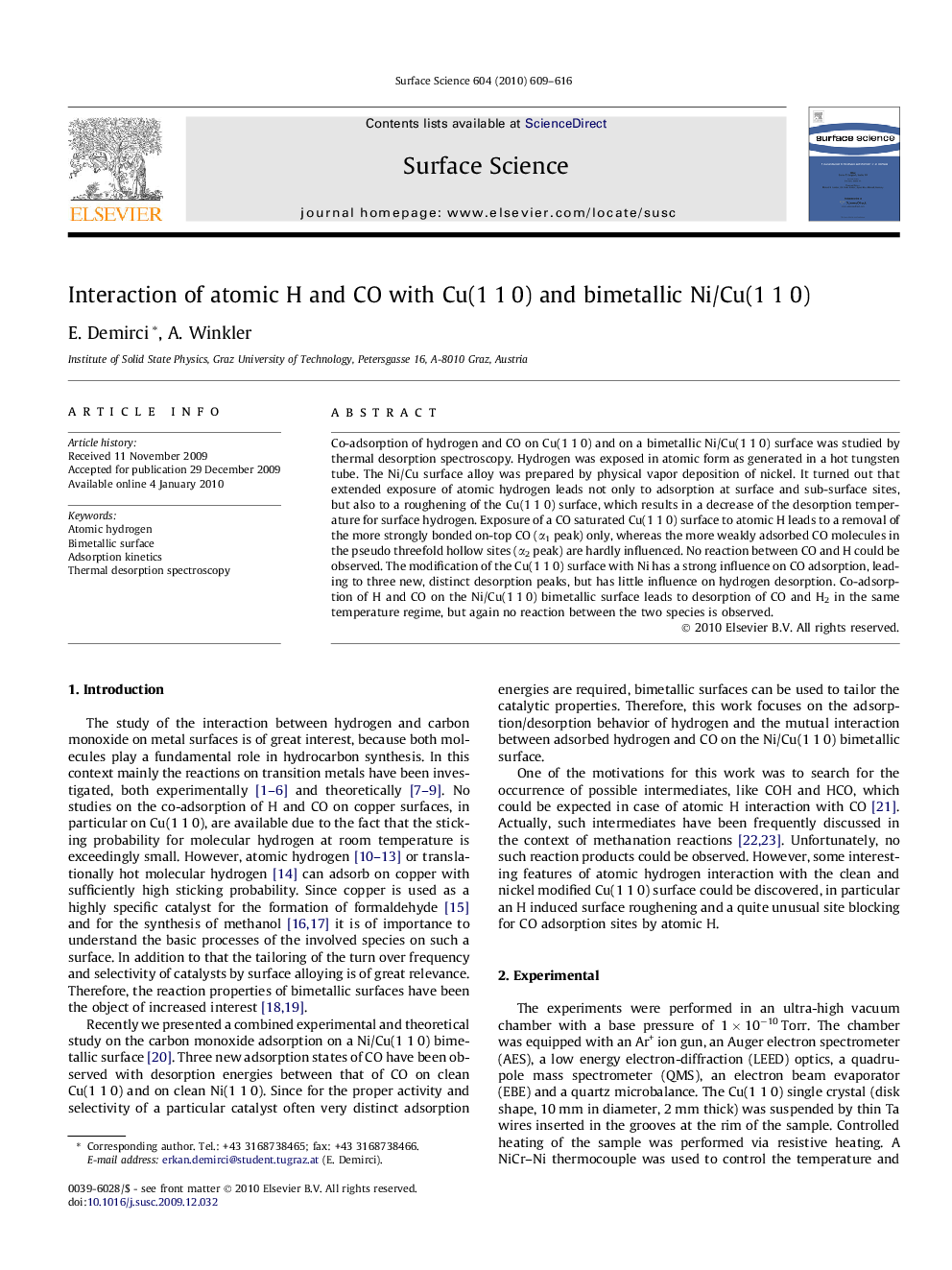| Article ID | Journal | Published Year | Pages | File Type |
|---|---|---|---|---|
| 5423986 | Surface Science | 2010 | 8 Pages |
Co-adsorption of hydrogen and CO on Cu(1 1 0) and on a bimetallic Ni/Cu(1 1 0) surface was studied by thermal desorption spectroscopy. Hydrogen was exposed in atomic form as generated in a hot tungsten tube. The Ni/Cu surface alloy was prepared by physical vapor deposition of nickel. It turned out that extended exposure of atomic hydrogen leads not only to adsorption at surface and sub-surface sites, but also to a roughening of the Cu(1 1 0) surface, which results in a decrease of the desorption temperature for surface hydrogen. Exposure of a CO saturated Cu(1 1 0) surface to atomic H leads to a removal of the more strongly bonded on-top CO (α1 peak) only, whereas the more weakly adsorbed CO molecules in the pseudo threefold hollow sites (α2 peak) are hardly influenced. No reaction between CO and H could be observed. The modification of the Cu(1 1 0) surface with Ni has a strong influence on CO adsorption, leading to three new, distinct desorption peaks, but has little influence on hydrogen desorption. Co-adsorption of H and CO on the Ni/Cu(1 1 0) bimetallic surface leads to desorption of CO and H2 in the same temperature regime, but again no reaction between the two species is observed.
